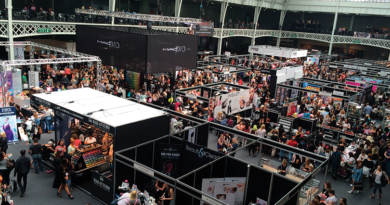BUILDING TOP COPY FOR YOUR EXHIBITION STAND
The term graphics is often used in a very broad sense when referring to exhibition stand build and design. The graphics on a stand can serve purpose in accompanying product displays, brand messaging or simply just to draw the attention of visitors. Due to the competition for footfall at exhibitions then you can often find that getting the graphics right is crucial to success.
But fear not. We’ve put together a series of blogs to run over the coming weeks based on our experiences to assert some pointers on the good and evil in the world of exhibition stand graphics, so that when it comes to creating the graphics for your stand you will have an idea of what you want to do.
This first instalment is focussed around the use of text in graphics and what to consider to best utilise it for your business aims.
Keep the conversation light
The temptation to go overboard when coming up with the copy for your stand can sometimes be difficult to avoid, especially when you have got a lot to say about a product you’re excited about. But exhibition visitors are busy people with a lot to see, and if your copy reads like a chapter from War and Peace then it is likely to be ignored in the busy show environment. It is worth trying to trim the fat from your copy and filter down your copy into 3 or 4 succinct lines that sum up what you want to say about your product or business.
Copy isn’t often a drawing factor for people to a stand and is often there to support and deliver the crucial details of a product or message. If you are wanting to communicate data or information that could be conceived as a tad boring, then you could always try to liven it up. Infographics are a great way to display information in a more dynamic and viewer friendly way, take a look at some good examples here.
Formatting your text
Arranging your text needn’t simply be a case of title, body copy and picture. It can sometimes pay off to get creative with the layout of text around images and displays. Experiment with positioning of words and format to see what fits in with your image and what works and what doesn’t. Also think about the hierarchy of the text and the way you want to communicate the most important information to your audience.


